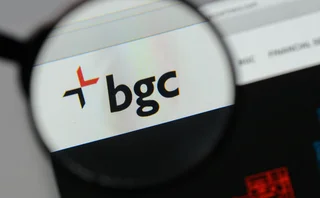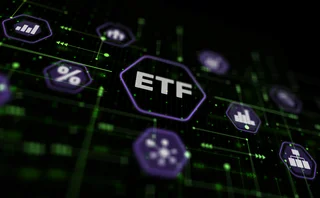Anthony Malakian: There’s No ‘Simple’ in Integration

It is budget season again. CIOs on the buy side are looking to 2013 and trying to figure out how to stretch their dollars. For many, as budgets continue to be constrained, integrating systems has become their raison d’être.
According to a recent study conducted by Stamford, Conn.-based consultancy Greenwich Associates, 44 percent of hedge funds cut their trading desk budgets this year compared to last, while 40 percent reported flat spending. For the purposes of this study, these budgets were a combination of technology spending and trader compensation, but excluded capital allocated to pay trading commissions. Greenwich says the majority of spending is going toward order management systems (OMSs) in the US and UK, whereas hardware is getting the greatest attention in continental Europe and Asia excluding Japan.
Ken Ennis, an executive director at Greenwich, says the reason for the bulk of UK and North American buy-side firms spending on their OMS is that they are trying to integrate these systems with their execution management systems (EMSs) and transaction-cost analysis (TCA) tools. This is because these firms have to get by with fewer people on the desk to manage these systems, thus leading to far greater integration, he says. But the challenge facing funds is that they have to integrate these systems with constrained budgets, unlike in the past when they could throw dollars at the problem.
“You would think that integration work with the OMS, EMS and the other systems involved in trading would be on the table for increases, but it’s hard to see with cost challenges a noticeable uptick within the next year or two,” Ennis says.
Dog in This Fight
I recently spoke with a number of executives from a large OMS/EMS provider, and they said that reason for this trend—it’s important to remember that they have a dog in this fight—is that buy-side firms are looking for any way possible to manage down their total desktop costs by consolidating the number of EMSs they use to execute orders. But without proper integration, the trades don’t get passed from the OMS to the EMS efficiently, thus creating confusion as to why a trade is not being processed.
For many, as budgets continue to be constrained, integrating systems has become their raison d’être.
Only users who have a paid subscription or are part of a corporate subscription are able to print or copy content.
To access these options, along with all other subscription benefits, please contact info@waterstechnology.com or view our subscription options here: http://subscriptions.waterstechnology.com/subscribe
You are currently unable to print this content. Please contact info@waterstechnology.com to find out more.
You are currently unable to copy this content. Please contact info@waterstechnology.com to find out more.
Copyright Infopro Digital Limited. All rights reserved.
You may share this content using our article tools. Printing this content is for the sole use of the Authorised User (named subscriber), as outlined in our terms and conditions - https://www.infopro-insight.com/terms-conditions/insight-subscriptions/
If you would like to purchase additional rights please email info@waterstechnology.com
Copyright Infopro Digital Limited. All rights reserved.
You may share this content using our article tools. Copying this content is for the sole use of the Authorised User (named subscriber), as outlined in our terms and conditions - https://www.infopro-insight.com/terms-conditions/insight-subscriptions/
If you would like to purchase additional rights please email info@waterstechnology.com
More on Trading Tech
Consortium backs BGC’s effort to challenge CME
Banks and market makers—including BofA, Citi, Goldman, Jump and Tower—will have a 26% stake in FMX.
Symphony boosts Cloud9 voice offerings with AI
The messaging and collaboration platform builds on Cloud9’s capabilities as it embraces the AI wave in what CEO Brad Levy calls “incremental” steps.
Can exchanges leverage new tech to claw back ETF share from RFQ platforms?
Systematic trading strategies and proliferating data are bringing efficiency to an otherwise-fragmented European ETF market.
Nasdaq reshuffles tech divisions post-Adenza
Adenza is now fully integrated into the exchange operator’s ecosystem, bringing opportunities for new business and a fresh perspective on how fintech fits into its strategy.
Liquidnet sees electronic future for gray bond trading
TP Icap’s gray market bond trading unit has more than doubled transactions in the first quarter of 2024.
This Week: HKEx's new derivatives platform; GoldenSource; Quonian-SimCorp, and more
A summary of some of the latest financial technology news.
Chris Edmonds takes the reins at ICE Fixed Income and Data Services
Edmonds is now leading ICE’s fixed income and data business as the rush to provide better data and analytics in fixed income builds.
Systematic tools gain favor in fixed income
Automation is enabling systematic strategies in fixed income that were previously reserved for equities trading. The tech gap between the two may be closing, but differences remain.
Most read
- Chris Edmonds takes the reins at ICE Fixed Income and Data Services
- Deutsche Börse democratizes data with Marketplace offering
- Waters Wavelength Podcast: Broadridge’s Joseph Lo on GPTs








